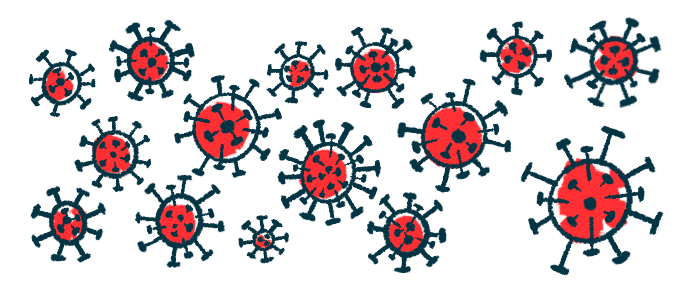No real COVID-19 infection impact seen for hemophilia patients
Chinese study shows infections did not affect bleeding episodes, treatment

Having a COVID-19 infection had no significant impact on bleeding episodes, nor on the levels of factor replacement therapy used in treatment, for people with hemophilia, a new study from China found.
The study did reveal, however, that, compared with adults, children with hemophilia had a significantly lower incidence of bleeding events during parts of the COVID-19 pandemic, possibly due to fewer social interactions and less outdoor activity.
While the researchers noted that “the sudden pandemic of COVID-19 … posed a challenge to the management of patients with hemophilia,” they said efforts from healthcare professionals in China “elevated the treatment level” given patients, particularly in rural areas.
“Hemophilia diagnosis and treatment centers can help patients with hemophilia receive better support during disease epidemics using better communication measurements for management and preparation,” the researchers wrote.
The study, “Impacts of the COVID-19 pandemic on pediatric and adult patients with hemophilia,” was published in the journal Annals of Hematology.
Investigating the ‘specific impact’ of COVID-19 infection on hemophilia patients
Hemophilia is mainly caused by mutations in the genes that provide instructions to produce specific blood clotting factors — proteins that are needed for the blood to clot. As a result of these mutations, clotting factors are either faulty or produced in very low amounts, putting hemophilia patients at a high risk of excessive and prolonged bleeding episodes.
Some studies suggest that people with hemophilia who have COVID-19 have a higher risk of bleeding, particularly in the gastrointestinal tract, and also may be more likely to require hospitalization.
However, according to researchers at the Fujian Medical University Union Hospital in southeastern China, “the specific impact of this infection on hemophilia patients remains unknown.”
That knowledge gap led the team of scientists to assess the effects of the COVID-19 pandemic on the symptoms, treatment usage, and social activity of people with hemophilia in the region. The researchers conducted an online interactive questionnaire survey involving 265 hemophilia patients, which collected data every two months between January 2022 and January 2023.
All of the patients were male and the majority (about 70%) were adults. Those 185 patients had a mean age of 31.8. Also included in the study were 80 children with a mean age of 7.8 years. For patients younger than 10, parents answered the questionnaire.
Overall, most patients had hemophilia A (89.1%), while 10.9% had hemophilia B. In most cases (65%), the disease was considered severe.
A higher proportion of patients (45.7%) received treatment for hemophilia on an on-demand basis as needed, while about a third (30.2%) were on regular preventive treatment. About 17.3% were on intermittent preventive treatment.
During the pandemic, bleeding episodes were stable or less frequent in most patients (82.6% of children and 73.3% of adults). However, the incidence rate of such events among those with hemophilia A was significantly lower in children than in adults (59.4% vs. 80.8%).
Also, children with hemophilia A had significantly fewer social interactions and less outdoor activity compared with adults during the pandemic (85.5% vs. 68.9%), the data showed. According to the study, this was driven by fear of contracting COVID-19, even though the proportion of patients with COVID-19 infection was similar in the two groups.
Recovery time for all patients averaged 6.1 days
Overall, 171 patients (64.5%) contracted COVID-19, of whom six had to be hospitalized. Of these, four patients were not vaccinated and required a longer hospital stay than the two vaccinated patients (mean of 11.3 vs. six days).
However, having COVID-19 was not associated with hemophilia severity or the amount of clotting factor usage — the standard hemophilia treatment that involves supplying patients with a functional version of the clotting factor they are missing.
Among hemophilia A patients, disease severity was not associated with lower social interactions and the rate of COVID-19 infections. Meanwhile, patients with mild or moderate hemophilia B had a higher rate of infection than did those with severe disease (77.8% vs. 36.4%).
“This finding could be explained by patients with severe hemophilia reducing social intercourse and isolating themselves at home more actively than patients with mild or moderate hemophilia,” the researchers wrote.
These findings showed that [a COVID-19] infection did not significantly affect the symptoms and treatment of patients with hemophilia.
COVID-19 infections also were more frequent in patients living in urban areas than among those residing in rural areas (74.3% vs. 53.6%). According to the researchers, this “could be attributed to the relatively smaller population and more effective social distancing in rural areas.”
Regarding the effects of a COVID-19 infection on hemophilia symptoms, bleeding events were significantly higher in patients who were not infected (85.1% vs. 69.6%). COVID-19 symptoms eased in all patients, with an average recovery time of 6.1 days.
However, the duration of the patients’ recovery was not associated with bleeding, hemophilia type or severity, coexisting conditions, or COVID-19 vaccination. It also was not linked to inhibitor status; inhibitors are neutralizing antibodies that bind to the clotting factors provided in factor replacement therapies, and may reduce the treatment’s efficacy.
“These findings showed that [a COVID-19] infection did not significantly affect the symptoms and treatment of patients with hemophilia,” the researchers wrote.







